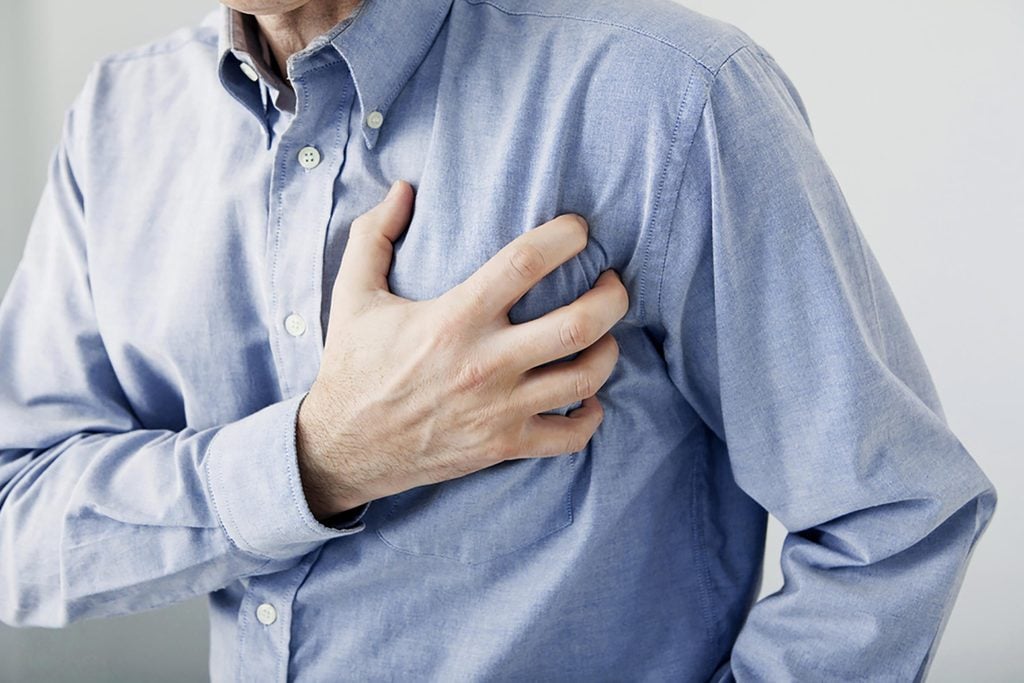Cardiac Arrest vs. Heart Attack: How to Tell the Difference
Updated: Mar. 01, 2021
Do you know the difference between a heart attack and cardiac arrest? Many people use the terms interchangeably, but they're not the same. Learning the difference can save a life.

There is a difference between “cardiac arrest” and “heart attack,” although people often confuse the terms. The confusion may stem from the fact that although heart attacks can cause cardiac arrest, not all do, and not all cardiac arrests are caused by heart attacks, explains San Francisco hospitalist, Shoshana Ungerleider, MD. (These are 7 scary chest pains you might mistake for a heart attack.)
Ragavendra Baliga, MBBS, MBA, FACC, FRCP, FRS (Med), a cardiologist with The Ohio State University Wexner Medical Center, explained to Reader’s Digest the essential medical distinction between cardiac arrest vs. heart attack:
- Cardiac arrest: This is an electrical malfunction of the heart that causes the heart to stop beating, whereupon the person stops breathing and loses consciousness immediately. Without the heart pumping blood to the body’s organs, the organs quickly begin to shut down, and the person will die within minutes—in the absence of immediate treatment to restart the heart (the automated external defibrillator (AED), a portable device that can shock the heart into normal rhythm, has been a game-changer in cardiac arrest survival rates). Along with heart attacks, the causes of cardiac arrest include drowning, electrocution, severe blood loss, and stroke.
- Heart attacks: This is damage to the heart muscle caused by a blockage in an artery leading to the heart, thus preventing blood from flowing to the heart.
Whereas cardiac arrest happens spontaneously and acutely, moving rapidly from chest pain and shortness of breath to collapse and loss of consciousness, heart attacks can be ongoing for hours, days, or even weeks, during which the symptoms may come and go. That’s why heart attacks can be diagnosed with the help of symptomology, changes in an EKG, blood tests such cardiac enzymes, and by heart catheterization. A simple way to distinguish between cardiac arrest vs. heart attack is offered by William H. Frishman, MD, MACP, Director of Medicine at Westchester Medical Center, who says, “Heart attacks involve patients with chest pain. Cardiac arrest involves a patient with chest pain who collapses.”
Accordingly, if a person suddenly collapses, loses consciousness and has no pulse, you should think in terms of cardiac arrest, advises Omar Awar, MD, a cardiovascular disease specialist affiliated with Memorial Hermann Memorial City Medical Center. By contrast, most people experiencing heart attacks are likely to remain conscious and able to communicate. They may complain of various symptoms such as chest discomfort, discomfort in one or both arms, back, neck, or jaw, although symptoms can differ based on race and gender.
Another clue as to what might be happening is age and pre-existing conditions. While cardiac arrest can happen to anyone of any age, heart attacks are more likely to occur in men above the age of 45 and women above the age of 50, and particularly in those with diabetes, high blood pressure, high cholesterol, obesity, and previous and/or family history of heart disease. These are the silent signs you have clogged arteries.
But without the assistance of medical or personnel, it’s hard to know exactly what might be happening, notes Dr. Ungerleider. Therefore, if someone is suspected to be experiencing either of these conditions, seek emergency assistance immediately. In other words, call 911. Then turn to first aid, such as CPR and the use of an AED.
